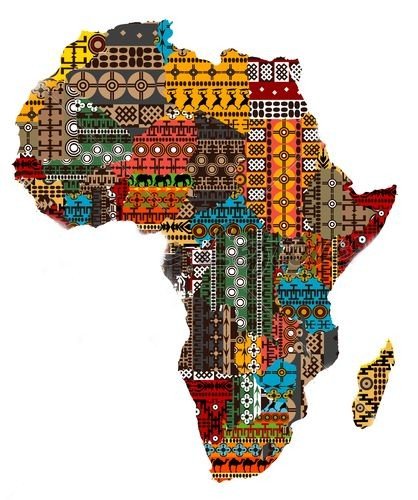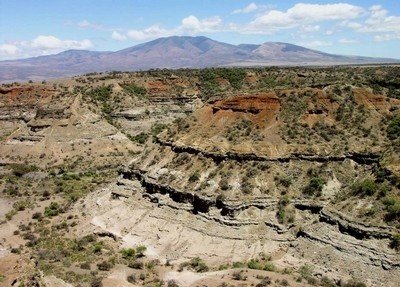Archaeology of Africa
Hello everyone, I hope you are all exceptionally well today? Like I promised, this is another post from my side. Do enjoy...

Africa is the world's second largest and second most-populous continent (behind Asia in both categories). At about 30.3 million km2 (11.7 million square miles) including adjacent islands, it covers 6% of Earth's total surface area and 20% of its land area.[3] With 1.2 billion people[1] as of 2016, it accounts for about 16% of the world's human population.
Africa is a beautiful continent, one would think with the so many differences in tribes, culture and people, there would be a lack of oneness among the people but this is not so because even with the differences they are uniquely unified.
Archaeology has been defined as been a lot of things but it is put simply as the study of man using his material past. In talking about the Archaeology of Africa, this is a way of finding out the history of Africa and how the past can help in the present life.
Archaeology of Africa

Olduvai Gorge
Africa has the longest record of human habitation in the world. The first hominins emerged 6-7 million years ago, and among the earliest anatomically modern human skulls found so far were discovered at Omo Kibish. European archaeology, as well as that of North Africa, is generally divided into the Stone Age (comprising the Lower Paleolithic, the Middle Paleolithic, the Upper Paleolithic, the Mesolithic, and the Neolithic), the Bronze Age, and the Iron Age. For Africa south of the Sahara, African archaeology is classified in a slightly different way, with the Paleolithic generally divided into the Early Stone Age, the Middle Stone Age, and the Later Stone Age.After these three stages come the Pastoral Neolithic, the Iron Age and then later historical periods.Africa's prehistory has been largely ignored, with the exception of research into early human evolution.However, it is overseen by the PanAfrican Archaeological Association, whose members consist of professional archaeologists from all over Africa.

Homo erectus skull
The Early Stone Age (ESA), which spanned from approximately 2.6 million years ago (mya) - 280,000 years ago (ya), describes a period in African prehistory in which the first stone tools were developed. Early sites along the East African Rift include Lomekwi in the Turkana Basin, Kenya, and Olduvai Gorge farther south in modern-day Tanzania. The earliest hominids were discovered in Ethiopia and titled Ardipithecus ramidus. The diverging species of hominin are known as australopithecines and were first discovered in Olduvai. Australopithecines and their fossils include Paranthropus boisei, the most famous being know and “Zinj” or “Nutcracker man” by Mary Leakey, the archaeologist who found it. Another older, famous australopithecine, related to those found at Olduvai Gorge but found approximately 2000 kilometers to the north east in the Awash Valley of Ethiopia, is Lucy, who was discovered by Donald Johanson and his team in 1974.
The earliest relative dating for stone tool use was discovered in 2015, by Sonia Harmand, at Lomekwi 3 in West Turkana, Kenya with stone tools dating to 3.3 million years ago. Prior to this discovery, some of the oldest stone tools were found at Lokalalei 2C in West Turkana, where artifacts exhibiting knapping processes conducted by Australopithecus africanus date to about 2.34 million years ago, marking the beginning of the ESA. Incorporation of tools provided early hominins the ability to respond to changes more readily outside of the immediate needs of daily-life and extended adaptability behavioral patterns into long term trends experienced over generations.
Around a million years later, Homo erectus evolved into a more advanced species and made tools known as the Acheulean handaxes. These handaxes were a multipurpose bifacial technology that remained unchanged for thousands of years. The technology demonstrates an increase in brain development and complexity in Homo erectus, as shown by the increased level of forethought and knowledge of material required for production of the tools. Homo erectus are also associated with the first instances of "modern human living," such as fire, "modern emotions," and art. The earliest evidence for hominins controlling fire is found in Wonderwerk Cave, South Africa. Along with their new technologies, they were also a part of the first "Out of Africa" movement and spread to all parts of the world. This movement took place somewhere around 1.8-0.8 million years ago, where Homo erectus spread out from Africa and into Eurasia. One of the most notable Homo erectus skeletons ever found was that of Nariokotome Boy, who was found near Lake Turkana in Kenya, discovered by Richard Leakey and Kamoya Kimeu. Nariokotome Boy was a teenager when he died, and his skeleton exhibits the first evidence for caring in the archaeological record, because he was cared for through his debilitating scoliosis.
Just recently discovered was a new addition to the line of human ancestors named Homo naledi. Found in Rising Star Cave in South Africa, Homo naledi is undated but has features of both primitive and modern humans.
Hi! I am a robot. I just upvoted you! I found similar content that readers might be interested in:
https://en.wikipedia.org/wiki/African_archaeology
Are you one of the lazy youths I've been hearing about?
Congratulations @peacefulbliss! You received a personal award!
You can view your badges on your Steem Board and compare to others on the Steem Ranking
Vote for @Steemitboard as a witness to get one more award and increased upvotes!